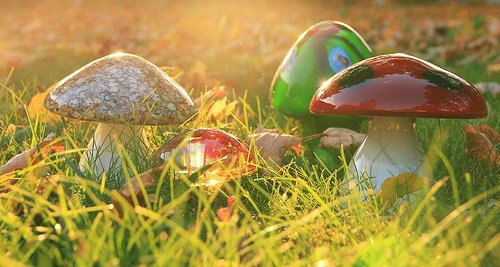
Jews, Drugs, and the Muck of Daily Life
In this video, Rabbi Aryeh Kaplan sort of tosses off the idea that Judaism is an eastern religion. He also talks about Jewish meditation. Essentially—you can consider Torah from multiple angles, both internal and external, and there are infinite levels of contemplation. Think of it as an M.C. Escher text. Kabbalah is about uncovering the secret inner workings of Torah and having a “direction experience of G-d” through meditation. So how does a Jew meditate? Jews meditate on language, savoring words and slowing down to contemplate meaning through the shape of letters and their aural resonance. Prayers, combined with visualizations, become mantra-like, lulling and pulling us towards the divine. Language thus becomes the bridge or prop inducing a meditative theta wave state. But what if you were to get alchemical as well? Take one part liturgy, add two parts bong hit? Kaplan suggests that some of the early sages might have toyed with the use of marijuana or other magic incenses. And there are many ties between hallucinogens, shamanism and psychotherapy (see here). But Rabbi Ariel Bar Tzadok is pretty clear that, whatever the grey area historically, there is no excuse for what is essentially just bad behavior. Leviticus (that eternal buzz-killer) tells us that “Whosoever would enter the presence of G-d without full faculties is condemned to death.”
Ultimately though, drugs in shamanic practice are just a tool, a way of rising above monkey-mind chatter, but they are external leverage, not internal strength. And as anyone with hallucinogenic experience can tell you, narcotics can induce an inherently un-mindful state. They alter consciousness, but in a way too unpredictable to be used with consistent therapeutic value. So let’s go back to the base presumption with Jews and the body: you do not own this body, it belongs to G-d. These are borrowed elements. Take care of them, and return them to the Earth in good form. On that note, I think my Cabernet has had time to breathe—l’chaim!
photo credit: Shandi-lee via photopin cc



